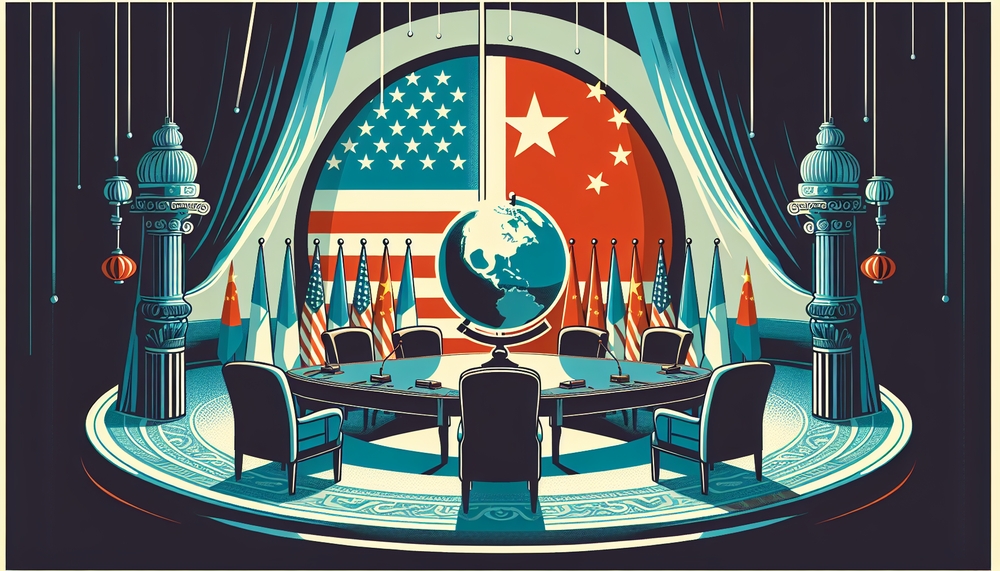Published
- 4 min read
The Emergence of China's Strategic Influence Amidst U.S. Transitions

A New Era of Global Dynamics
As the United States navigates through its political transitions, with Donald Trump’s election victory, the world stands at a pivotal junction. This shift has prompted reflections and recalibrations across continents, as traditional allies of the US, particularly in Europe and the Indo-Pacific, reassess their strategic alignments. Amidst this backdrop, China, under the leadership of Xi Jinping, has poised itself to project greater global influence and reinforce its geopolitical stance.
China’s Strategic Preparations
China has been strategically positioning itself in anticipation of potential global shifts. Recognizing the possibility of a second Trump administration, Xi Jinping has adeptly presented China as a cornerstone of stability and development, particularly for the Global South. Xi’s recent interactions at international platforms, like the G20 summit, have underscored Beijing’s commitment to playing a major role on the global stage, challenging the dominance of the Western-led order.
Xi’s stance, as exhibited in his interactions with former US President Joe Biden, reflects a posture of confidence. This is not only about countering US narratives but forging a pathway that intertwines China’s development model with the aspirations of other developing nations. The unequivocal message to the US is China’s readiness to protect its core interests, famously referred to as its ‘red lines,’ which include Taiwan, democracy, human rights, and China’s development models.
China’s Red Lines: More Than Just Warnings
During the G20 summit, Xi clearly articulated China’s non-negotiable principles. These ‘red lines’ are more than just diplomatic warnings—they are an assertion of China’s envisioned role in reshaping global governance. By establishing these as the parameters in which it operates, China is also broadcasting a message to the international community about its perception of rightful sovereignty and governance models.
This strategic assertion is crucial as China aims to reinforce its system, distinguishing it as superior to Western democratic structures. The promotion of its Whole Process Democracy and the pivot toward a multipolar global order are key facets of this strategy. By promoting these ideas, China not only seeks validation but aims to delineate a global image where Beijing’s system and ideologies are leaders of the new era.
Championing Poverty Alleviation and Multilateralism
The narrative of China as a champion for developing nations is gaining traction, marked by pledges and strategic relationships, especially within the UN framework. By echoing the theme of poverty alleviation, a central tenet of the G20 summit, Xi has successfully positioned China as a reliable ally for numerous developing nations. Through initiatives like the Belt and Road, and by proposing concrete steps for global development, China’s message resonates strongly with nations seeking pathways out of poverty.
Xi’s call for reduced ‘small yards, high fences’ cautions against protectionist policies and beckons for more open trade relations. Such rhetoric not only establishes a solidary front with nations in the Global South but also critiques Western hegemony in economic affairs.
Military Might and Strategic Alliances
China’s assertiveness is not limited to economic and diplomatic fronts. With Taiwan remaining a focal point of China’s regional strategy, military demonstration plays a crucial role in Xi’s broader geopolitical strategy. These acts, combined with multifaceted security drills conducted alongside Russia, exemplify China’s readiness to defend its interests robustly underpinned by strategic military alliances.
The synergy between China and Russia serves as a powerful symbol of the evolving global order. Their joint military cooperation and strategic dialogues reflect a growing partnership aimed at counterbalancing Western influence.
Conclusion: A World in Transition
As the global landscape shifts with political transitions in the US, China’s tactical maneuvers highlight its preparedness to seize the moment. Positioned to face global challenges head-on, Xi Jinping’s leadership underscores China’s readiness to champion a new world order characterized by multilateral cooperation, strategic development initiatives, and robust sovereignty.
In this evolving geopolitical climate, the world watches closely as China strengthens its foothold, signaling not just an ascendant nation, but a defining power in shaping the contours of the 21st-century global order. The dynamics between a transitioning US and a strategically positioned China could well define this decade’s geopolitical narrative.
